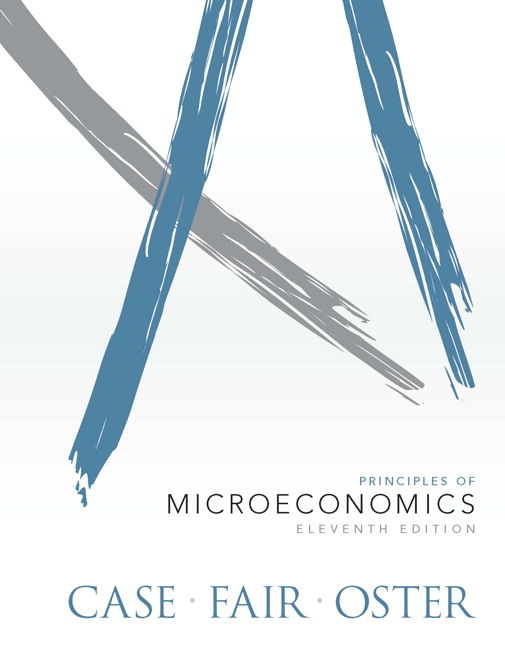Description
Reviewers tell us that Case/Fair/Oster is one of the all-time bestselling POE texts because they trust it to be clear, thorough and complete. Case/Fair/Oster readers also come away with a basic understanding of how market economies function, an appreciation for the things they do well, and a sense of things they do poorly. Readers begin to learn the art and science of economic thinking and begin to look at some policy and even personal decisions in a different way.
SAMPLE
CHAPTER 2
- Answers will vary, but should include:
(a) the value of alternative uses of time (studying for other classes, leisure)
(b) the value of alternative uses of time (studying, other forms of leisure)
(c) the value of the other goods and services that could have been purchased with the money used to purchase the car
(d) the value of the goods and services that taxpayers could have purchased with the additional property tax revenue
(e) the value of other goods and services that the governments could have purchased with the money used to purchase the space station, or the value of the goods and services that taxpayers could have purchased with the tax revenue used to finance the space station
(f) the foregone salary that you would have earned and the value of the alternative uses of time
- Disagree. To be efficient, an economy must produce what people want. This means that in addition to operating on the ppf (resources are fully employed, best technology is being used), the economy must be operating at the right point on the ppf.
- Opportunity costs of building the bridge include the value of other goods and services that the government of Mallsburg could have purchased with $25 million or the value of the goods and services that taxpayers could have purchased with the tax revenue used to finance the bridge, as well as any inefficiencies created by the income tax by reducing incentives to work. In addition, the construction itself may impose costs—delays, noise, and so on—and presumably shopkeepers located near the older bridge will lose as consumers shift their business toward the main mall.
Benefits of the new bridge include reduced travel time for shoppers and commuting time for workers, increased sales tax revenues for Mallsburg, and gains for shopkeepers located in the main mall.
There may be other quality of life costs and benefits that are difficult to sort out without more information. The bridge may have environmental effects that could be positive (less pollution from idling traffic) or negative (depending on where and how the bridge is constructed). Also, there may be effects on the look and lifestyle of the town. A bridge through the center of the town is likely to affect daily living in any number of ways.
Beyond the costs and benefits, there is always the question of distribution. Is the income tax system of Mallsburg equitable? Are the shopkeepers likely to lose more than those likely to gain? Economists would typically argue for governments to undertake projects whose costs exceed their benefits, and then address any concerns about income distribution separately. To the extent these concerns are not addressed, however, you might consider writing about the income distribution effects of the new bridge.
- (a) For Kristen, the “cost” of a pot holder is five wristbands; for Anna, the cost of a pot holder is six wristbands. Kristen has a comparative advantage in pot holders.
(b) Anna has a comparative advantage in the production of wristbands because the opportunity cost (1/6 of a pot holder) is lower for Anna than it is for Kristen (1/5 of a pot holder).



Reviews
There are no reviews yet.